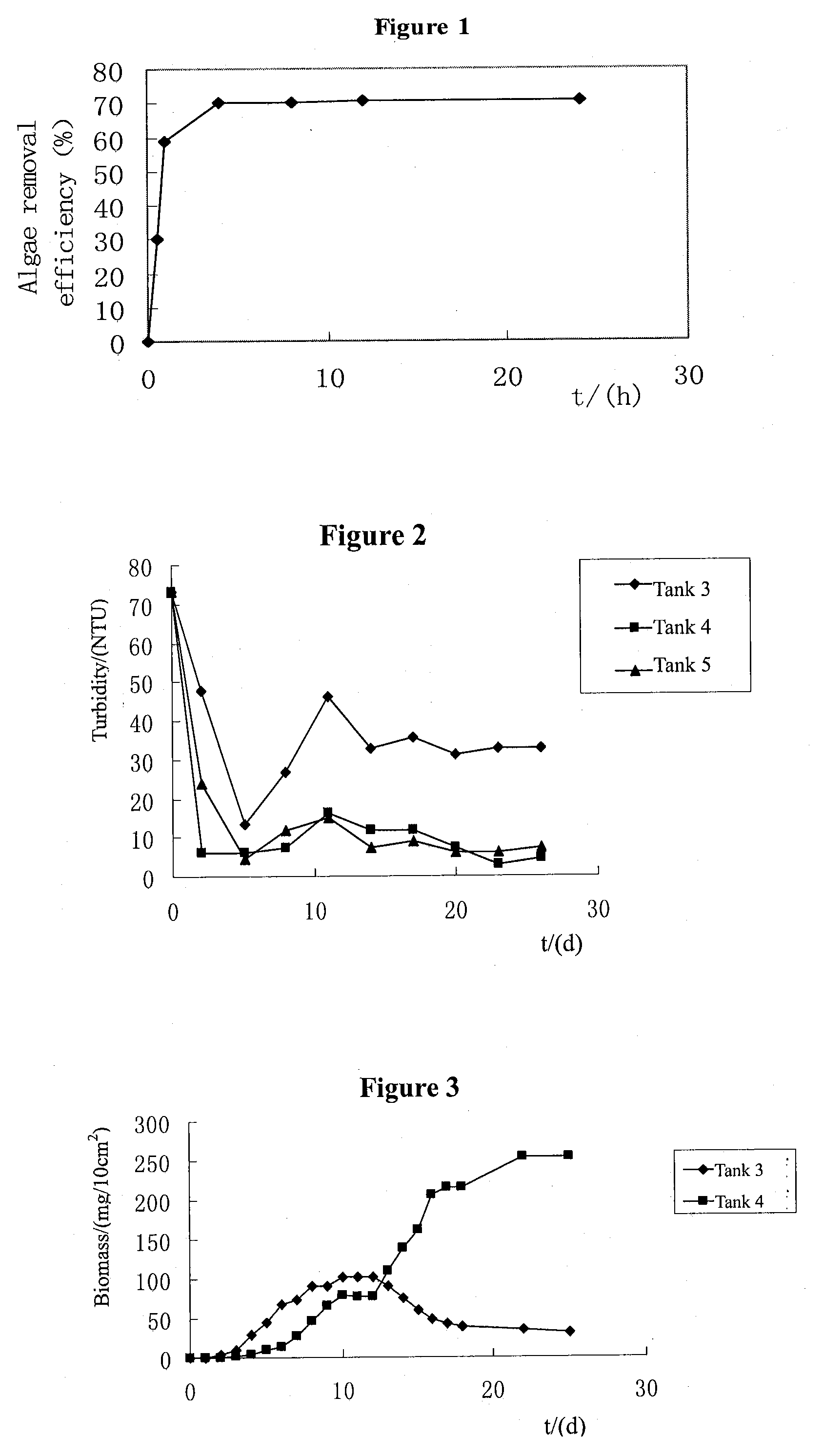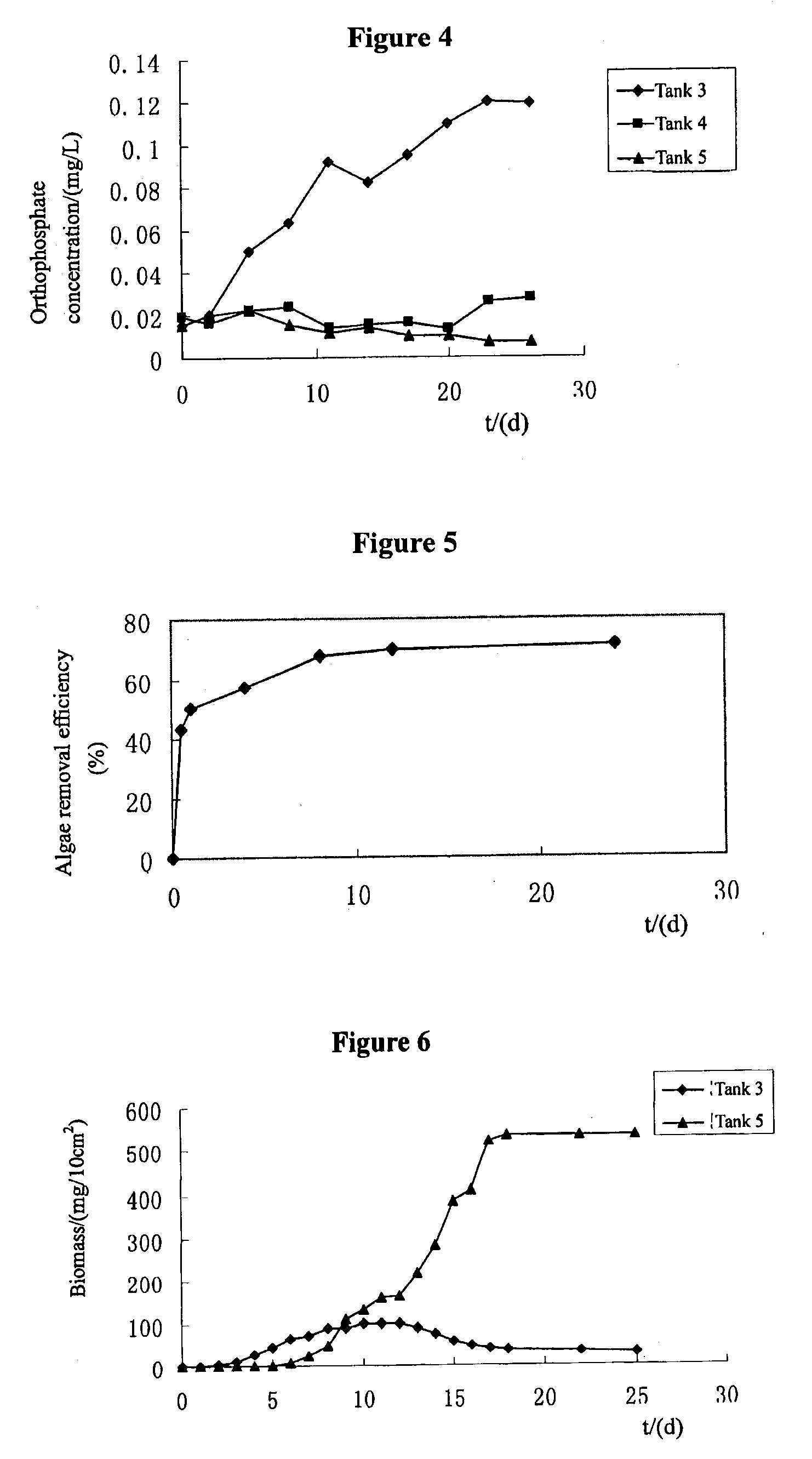Composite Material and Method for Removing Harmful Algal Blooms and Turning Them into Submerged Macrophytes
a technology of algal blooms and composite materials, applied in the direction of filtration separation, multi-stage water/sewage treatment, separation processes, etc., can solve the problems of serious problems, ecological function destruction, eutrophication of lakes, etc., and achieve the effect of enhancing the ecological restoration of eutrophication lakes and improving water quality
- Summary
- Abstract
- Description
- Claims
- Application Information
AI Technical Summary
Benefits of technology
Problems solved by technology
Method used
Image
Examples
embodiment 1
Experimental Objective: the Algae Removal and the Ecological Restoration of Submerged Macrophytes Using Chitosan-Modified Clays.
[0033]20 g soils particles collected from Chaohu lake (180 mesh), 1 g chitosan and 10 mg seeds after pretreatment are mixed and distilled water is added to prepare 1 L composite material. The experiments are conducted in 1 m3 tanks simulating natural lake environment. There are 10-cm deep sediments and 90-cm deep natural lake water sampled from lakes with severe algal blooms. The experimental tanks are exposed to diurnal fluorescent light (12 hr on and 12 hr off, 166 ttw / cm2 at water surface). The experiment is conducted at constant temperature (25° C.). Waves are made artificially to simulate the effect of wind wave on the resuspension of sediments in lakes. The micro-aeration system simulates the water-air exchange at the surface, but does not influence the hydrodynamic status at the bottom. Natural lake water and algae used are collected from Chaohu Lake...
embodiment 2
[0037]Experimental Objective: the Algae Removal and the Ecological Restoration of submerged macrophytes at the Same Time Using the Composite Material Made from Sepiolite.
[0038]100 g sepiolite (180 mesh), 0.1 g chitosan and 10 mg seeds after pretreatment are mixed and distilled water is add to prepare IL composite material. The composite material is sprayed to Tank 5 for algae removal, and the experiment of algal removal and submerged macrophytes restoration is conducted under the same condition described in Implementation Case 1. FIG. 5 shows that 70% of algae cells are removed within 10 hours after the composite material is added. The biomass of Vallisneria spiralis L in Tank 5 is 500 times more than that of Tank 3, and the biomass of Vallisneria spiralis L is also more than two times that of Tank 4 in implementary case 1 (FIG. 6). Moreover, the composite material made from sepiolite also can inhibit the phosphorus release from sediments (FIG. 4).
PUM
| Property | Measurement | Unit |
|---|---|---|
| temperature | aaaaa | aaaaa |
| concentration | aaaaa | aaaaa |
| concentration | aaaaa | aaaaa |
Abstract
Description
Claims
Application Information
 Login to View More
Login to View More - R&D
- Intellectual Property
- Life Sciences
- Materials
- Tech Scout
- Unparalleled Data Quality
- Higher Quality Content
- 60% Fewer Hallucinations
Browse by: Latest US Patents, China's latest patents, Technical Efficacy Thesaurus, Application Domain, Technology Topic, Popular Technical Reports.
© 2025 PatSnap. All rights reserved.Legal|Privacy policy|Modern Slavery Act Transparency Statement|Sitemap|About US| Contact US: help@patsnap.com


